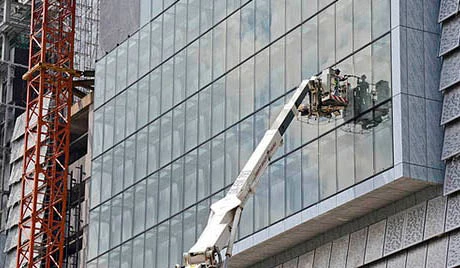What generates 70 percent of the greenhouse gases emitted from cities like New York, Beijing, or New Delhi? Not long ago, I might have answered “cars.” But the real culprit is buildings – our homes, offices, schools, and hospitals. Many of which use electricity, water, and fuel extremely inefficiently because of the way they were initially designed.
In fact, about 40 percent of the world’s electricity is used to cool, light and ventilate buildings, even though much more efficient technology exists.
The longevity of buildings is why we need to think much more about them at the new construction phase. Decisions about building materials, insulation, and plumbing live on for decades or longer. That’s why IFC, the private sector-focused arm of the World Bank Group, is working to help builders and developers in emerging markets lock in climate-smart choices at the early design stage.
Our new certification tool EDGE, which stands for Excellence in Design for Greater Efficiencies, was designed specifically for emerging markets, where housing needs are set to grow exponentially as a result of urbanization pressures. It is Internet-based and easy to use, offering developers a range of inexpensive design choices that might otherwise be overlooked in the rush to build.
Buildings certified by EDGE use 20 percent less energy than their peers, offering long-term emissions savings and lower utility bills – a major benefit in affordable housing.
Urban planning and policies can help encourage this shift to low-carbon development on a wide scale. Our colleagues in the World Bank are working at the government level to help city leaders plan for low-carbon growth, track their emissions, and raise their credit ratings to secure the financing to invest in climate-smart, resilient buildings and infrastructure.
Climate change is already raising the cost of development, and only 4 percent of the 500 largest cities in developing countries are considered creditworthy in international finance markets right now. Ensuring that cities have the financing to choose energy-efficient construction will be critical to lowering the urban impact on climate change and growing livable cities for the future.
We see enormous potential for green buildings, and are currently exploring opportunities for the EDGE program in markets such as South Africa, Colombia, India, China, and the Philippines, among others. By encouraging fast-growing cities to make climate-smart choices in their new construction, we can make a real and lasting difference in developing countries.
It is clear to me that building green is both feasible and economical, and can have positive long-term impacts in the emerging markets where we operate.
Photo: Trinn Suwannapha / World Bank



Join the Conversation